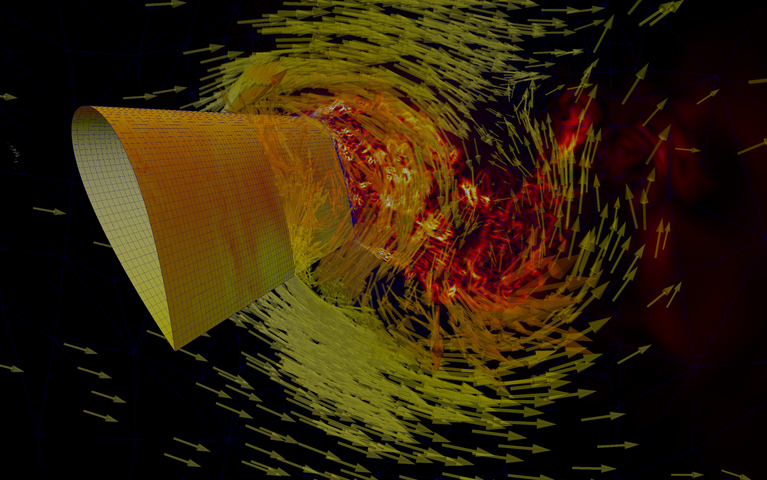June 20, 2017 - by Simone Ulmer
Aerodynamic behaviour is crucial to an aircraft’s fuel consumption and noise levels. The characteristics of airflow along the fuselage and through turbines decide whether the craft can take off and fly in the first place. To save time as well as development and production costs, it is customary to use simulation techniques in the initial design and testing of streamlined structures. However, in 2014, NASA in its “Vision 2030” report identified room for improvement in such simulations. One factor here is that conventional algorithms are no longer efficient at using the theoretical quantity of Floating Point Operations per Second (FLOPS) available from modern computer architectures. A research group led by Peter Vincent, Reader in Aeronautics at Imperial College in London, has been helping to drive further improvements in this area with a new code and simulations on the hybrid system of the CSCS supercomputer "Piz Daint”.
New open source software for graphics processors
It is an engineering design headache to optimise the usually unsteady and turbulent airflows along an aeroplane’s fuselage, landing flaps and turbines. The simulation method used here is called Computational Fluid Dynamics (CFD). Vincent and his team seek to enhance simulation realism by developing a new generation of CFD technologies based on high-order flux reconstruction methods and running on computer hardware with graphics processors, like the CSCS supercomputer “Piz Daint”. “This computer architecture is particularly suited to solving problems of such complexity,” says Vincent. He and his team developed the open source code PyFR for performing high-order flux reconstruction simulations.
With their new method, the scientists have now managed to run high-precision simulations of a special flow problem: the airflow over a NACA0021 aerofoil with incident air impinging at a critical angle of 60 degrees. This kind of situation causes the previously laminar airflow to develop turbulence, usually leading to deep stall. The worst-case outcome is a crash.
Simulation of turbulence without using approximation methods
The researchers employed the new method to simulate turbulence at many different scales around the wing and right down to its surface; which they were able to accomplish with great precision and without using approximation methods. Their objective was to model turbulence with the finest detail and realism possible, and the resulting simulations indeed correlate very well with wind tunnel test results – far closer than previous simulations could, write the researchers. They claim that this confirms the feasibility of simulating unsteady flow with realism and high precision, thanks to the new method running on computer architectures with graphics processors.
In 2016, aircraft worldwide carried 3.8 billion passengers while emitting around 700 million tons of carbon dioxide (CO2). Not only can simulations like these help to improve engineering designs in general; Vincent is convinced that when focused specifically on turbines and airframes, they can also reduce aircraft CO2 emissions and noise.
Further reading
Park JS, Witherden FD, Vincent PE: High-order accurate implicit Large Eddy Simulations of flow over a NACA0021 aerofoil in deep stall, AIAA Journal, ISSN: 1533-385X
